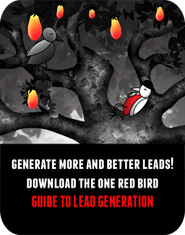You talk to your salespeople and they tell you that marketing leads suck. You talk to your marketing people, and they tell you that sales doesn’t know how to close anything.
Does this sound familiar?
If it does, you’re not alone. In many B2B sales enterprises, sales and marketing aren’t aligned, and they sometimes actually seem to work against each other.
So you know what it looks like when sales and marketing aren’t aligned. But what about when they are? How does that look?
No one’s suggesting that sales and marketing should be merged. They each have separate roles and functions. But they are dependent on each other, and they should have the same ultimate goal—to increase B2B sales. When the two functions are aligned, there is a constant communication between the two—a “feedback loop.”
Why Is This Important?
As a result of customers’ wariness toward dealing with sales—which has developed in large part because of the Internet—marketing now has more responsibility for lead nurturing. Sales can’t reach leads as early as they used to in the customer life cycle, so they have to rely on marketing to guide leads through the early stages.
But without sales and marketing alignment, leads will inevitably be sent to sales before they’re ready to be sold, using up your salespeople’s time and energy. And in today’s culture—where customers have control of information—contact from sales too early in a customer life cycle often turns off customers.
That’s why it’s crucial to have a system in place to score leads, with a certain score meaning they’re sales-qualified. Using this scoring, marketing can pass on leads to sales at just the right moment. That’s alignment.
Alignment is also essential in the development of the underlying marketing strategy. If marketing has no input from sales as it develops strategy in areas such as content development, market targeting, and lead generation, it shouldn’t be any surprise if the marketing effort results in leads that don’t get converted.
What Can You Do?
First, you need to have sales and marketing work together to develop the marketing objectives and lead scoring criteria. But that’s only the beginning of alignment. Marketing and sales must keep working together, engaging in an ongoing back-and-forth about the successful marketing strategies, as well as those that are fruitless.
Sales should let marketing know which lead information really helps them convert. They also must be continually providing feedback for adjusting the lead scoring criteria to reflect the reality they’re encountering.
Sales and marketing may need some encouragement to buy-in to this alignment process, but sales will soon realize that the more feedback they give marketing, the better the leads they get will be.
And marketing will realize that the more they incorporate feedback from sales into developing their marketing objectives and adjusting lead scoring criteria, the better sales will become at converting leads. That will make marketing happy, because they’ll see tangible results of their hard work and they’ll become more appreciated by sales and management. Sales will actually start to trust and respect marketing, and vice versa.
That’s when you’ll have true sales and marketing alignment, enabling you to continually maximize your sales and marketing resources and to continually improve in both areas.
The Bottom Line
All the marketing automation and strategic marketing theory in the world won’t result in successful marketing strategies unless you have sales and marketing alignment. It’s the glue that binds the whole package together.



